
Purple sage has various uses, mostly referring to plants.

Salvia greggii, the autumn sage, is a herbaceous perennial plant native to a long, narrow area from southwest Texas, through the Chihuahuan Desert and into the Mexican state of San Luis Potosi, typically growing in rocky soils at elevations from 5,000 to 9,000 ft. It was named and described in 1870 by botanist Asa Gray after Josiah Gregg, a merchant, explorer, naturalist, and author from the American Southwest and Northern Mexico, who found and collected the plant in Texas. It is closely related to, and frequently hybridizes with, Salvia microphylla. Contrary to its common name, it blooms throughout the summer and autumn.

Arbutus xalapensis, commonly known as the Texas madrone, naked Indian tree or Texas madroño, is a species of flowering plant in the heather family. It is native to Central America, the southwestern United States, and throughout Mexico. It is found in canyons and mountains, on rocky plains, and in oak woodlands, at altitudes of up to 3,000 m in the south of the range, but lower, down to 600 m in the north of the range.

Gutierrezia is a genus of flowering plants in the family Asteraceae, native to western North America and western South America. Plants of this genus are known generally as snakeweeds or matchweeds. Some species have been called greasewood. They are annual or perennial plants or subshrubs with yellow or white flowers.

Salvia coccinea, the blood sage, scarlet sage, Texas sage, or tropical sage, is a herbaceous perennial in the family Lamiaceae that is widespread throughout the Southeastern United States, Mexico, Central America, the Caribbean, and northern South America. At one time Brazil was considered to be where it originated, but its diploid chromosome count now points to Mexico as its place of origin.
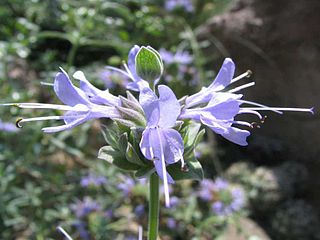
Salvia clevelandii, the fragrant sage, blue sage, Jim sage and Cleveland sage, is a perennial plant that is native to Southern California and northern Baja California, growing below 900 m (3,000 ft) elevation in California coastal sage and chaparral habitat. The plant was named in 1874 by Asa Gray, honoring plant collector Daniel Cleveland.
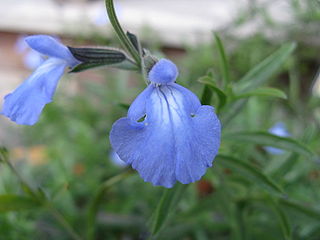
Salvia azurea, the azure blue sage, azure sage, blue sage or prairie sage, is a herbaceous perennial in the genus Salvia that is native to Central and Eastern North America.
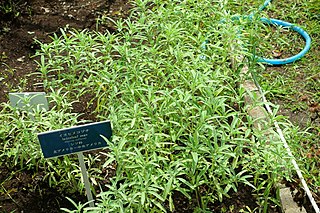
Salvia reflexa, the lanceleaf sage, Rocky Mountain sage, blue sage, lambsleaf sage, sage mint or mintweed, is a perennial subshrub native to the United States and Mexico and introduced to Argentina, Australia, Canada, South Africa and New Zealand.
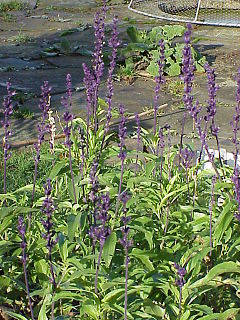
Salvia farinacea, the mealycup sage, or mealy sage, is a herbaceous perennial native to Nuevo León, Mexico and parts of the United States including Texas and Oklahoma. Violet-blue spikes rest on a compact plant of typically narrow salvia-like leaves; however, the shiny leaves are what set this species apart from most other Salvia, which bear velvety-dull leaves.
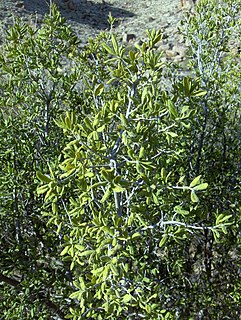
Diospyros texana is a species of persimmon that is native to central, south and west Texas and southwest Oklahoma in the United States, and eastern Chihuahua, Coahuila, Nuevo León, and Tamaulipas in northeastern Mexico. Common names include Texas persimmon, Mexican persimmon and the more ambiguous "black persimmon". It is known in Spanish as chapote, chapote manzano, or chapote prieto, all of which are derived from the Nahuatl word tzapotl. That word also refers to several other fruit-bearing trees.

Salvia ballotiflora is a species of flowering plant in the mint family, Lamiaceae, that is native to Texas in the United States as well as northeastern and central Mexico. Common names include shrubby blue sage and mejorana.
Salvia leptophylla is a herbaceous perennial that is native to Texas. As the common name implies, it has slender leaves and stems that give the plant an airy look, reaching 2 ft (0.61 m) tall with ensign blue flowers.
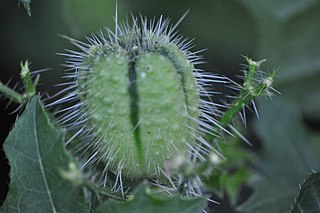
Cnidoscolus texanus, commonly known as Texas bullnettle, tread-softly, mala mujer, and finger rot, is a perennial herb covered with stinging hairs. The main stem, branches, leaves, and seed pods are all covered with hispid or glass-like bristly hairs that release an allergenic toxin upon contact. Contact with the plant results in intense pain: stinging, burning, and itching lasting for hours. It is native to the U.S. states of Texas, Arkansas, Kansas, Louisiana, and Oklahoma and also native to the northeastern state of Tamaulipas, Mexico. It is an herbaceous flowering plant that grows between 30–80 cm (11.8–31.5 in) tall and as much as 1 m (3.3 ft) across. Texas bullnettle has showy, fragrant white flowers that can bloom throughout the year in southern regions of its distribution, predominantly March to November in northern regions. It is a drought-tolerant plant, therefore making it a superb choice for xeriscaping. This plant is attractive to birds, bees, butterflies, and other insects. The seeds are known to be consumed by Rio Grande wild turkeys and mourning doves.

Styrax platanifolius is a species of flowering plant in the family Styracaceae known by the common name sycamoreleaf snowbell. It is native to northeastern Mexico in the states of Coahuila, Nuevo León, and Tamaulipas and the US state of Texas, especially on the Edwards Plateau.
Crataegus texana, the Texas hawthorn, is a member of the family Rosaceae. Typically, it is found in the form of a small tree or a large shrub and blooms in early spring, usually in the months of March and April. Flowers of the Texas Hawthorn are white and usually produce small, one-inch, scarlet fruits that are said to resemble tiny red apples. Its twigs are usually armed with thorns that can grow to be about one to three inches long.
Salvia subincisa, the sawtooth sage or sharptooth sage, is a small erect Salvia species that is native to New Mexico, Arizona, and Texas in the United States. It is typically found growing in sandy areas near roadsides or other arid parts of the American southwest. It is very often associated with Pueblo ruins in New Mexico, along with Cleome serrulata and Lithospermum caroliniense.
Gutierrezia texana is a North American species of flowering plant in the family Asteraceae known by the common name Texas snakeweed. It is native to the south-central United States and northern Mexico as far south as Guanajuato and Hidalgo.
Chaptalia texana, common name Silverpuff , is a North American species of plants in the sunflower family. It is native to Mexico, Texas, and New Mexico.
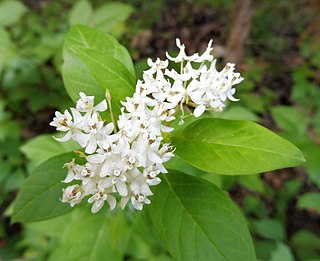
Asclepias texana, commonly called Texas milkweed, is a species of flowering plant in the dogbane family (Apocynaceae). It is native to North America, where it is widespread in the regions of the Chihuahuan Desert and Edwards Plateau. Its range spans from the states of Durango and Coahuilla in Mexico, north to the state of Texas in the United States. Its natural habitat is in dry rocky areas in canyons or along arroyos.

Vernonia texana, commonly called Texas ironweed, is a species of flowering plant in the aster family (Asteraceae). It is native eastern to North America, where it is found primarily in the South Central region of the United States. Its natural habitat is in open sandy woodlands.















